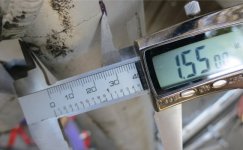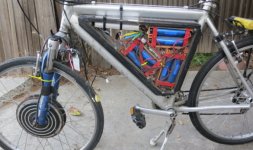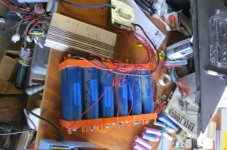Chalo said:
I was in engineering development and machining for about 15 years-- culminating in almost 6 years as the fifth employee on the starting team of what is now a high profile private space program. My title there was "technical generalist".
Then if you'd read either of the links above -- the non-wikipedia ones -- you'd not be calling this "theoretical". The engineering is real. I cite them not because I couldn't give anecdotal evidence of stuff I was personally involved with; but because I do not expect strangers on the internet to accept my word on my knowledge and experience. I cite them because they independently confirm what I've been saying.
Every time I mention "Al has no fatigue limit", you say: "All structural metals work harden; all of them fatigue." which is a fundamental mis-statement of the facts.
If a steel structure is design such that its expected maximum loading + some margin is less than the fatigue limit,
it will not fatigue. Ever. (for all practical purposes.
Aluminium has no fatigue limit. If you cycle it enough times, it will
always fail no matter how beefy you make it!
Your apparent ignorance of, or denial of, the (real-world) consequences of this widely known and stated fact, calls everything else into question. It is why aircraft manufacturers and operators adhere so closely to their rigorous maintenance schedules.
Of course, you can design things beefy enough, that the number of cycles required to reach that limit is high enough to exceed the expected life time due to other factors. But that goes completely against the fundamental reason for using aluminium in bike frames in the first place.
If you project a 10 year lifespan and design an aluminium bike frame to suffer orangutan-ing force levels, then you'd have to make it so beefy that there would be little or no savings over a steel frame constructed to the same specifications. And the steel frame would go on indefinitely barring accident or corrosion.
For racing frames renewed every year; and where the ... what 60 competition days a year for each rider? -- are spread over multiple frames, you can design to a 1+a bit safety margins and realise substantial savings. And for DH bikes ridden hard for 10 sunny weekends a year, you can design it to survive a few big knocks. But it isn't the big knocks that do for aluminium. It is the constant repetition of the standard loadings.
So, designing an aluminium frame to withstand the lesser, but constant and repetitious loads of the daily commute and last 10 years -- or even 5 -- is a substantial challenge as is.
But increase those constant repetitious loads by adding the weight of a hub motor or the twist of a mid-drive, and the increased shock loads from higher average speeds; and the weight transfers from higher accelerations and braking from higher speeds; and a frame that might have lasted 10 years daily commute under human power, will likely last 2 or 3 at most. And that's if it was designed for banging around -- a MTB, DH or XC.
Add those same increased loads to an aluminium frame designed to be weight weenie light -- for no good reason other than Strava status -- and you have a recipe for disaster.






